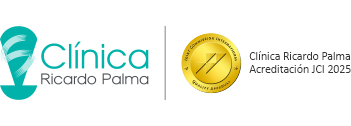Every February 15, we commemorate International Childhood Cancer Day, with the aim of raising awareness among the population about this disease. Dr. Esmeralda León, pediatric oncologist at our clinic, provides us with valuable information about cancer in children, a disease that, if detected in time, can be curable.
Most common types of childhood cancer
- Leukemia: This is the most common type of cancer. It begins in the bone marrow, the soft tissue found in the center of the bones, where blood cells are formed. Within it, acute lymphatic leukemia is the most common.
- Tumors of the central nervous system: These are the second most frequent cause of malignant tumors. Although great advances have been made in their diagnosis and treatment, this type of childhood cancer still represents one of the greatest challenges for health professionals.
- Lymphomas: They occupy third place and are a type of cancer that begins in the lymphatic system, made up of a network of organs and vessels that carry a transparent liquid called lymph in the body. This network is a fundamental part of the body’s immune system.
Advances in treatments
- With the knowledge of the disease, it is known that an important group of patients have a genetic affectation or predisposition to develop cancer at an early age, and this makes possible the timely detection and consequent treatment.
- On the other hand, there are more specific drugs to treat certain types or subtypes of childhood cancer, which improves the survival rate of this disease.
What signs and symptoms should we be alert for?
- Most typically, the child has unexplained fever for more than 1 week with no cause found.
- Bruising in areas of the body where the child has not had a previous contusion or blow.
- Appearance of lumps in different areas, not painful.
- Increased abdominal volume.
- Vomiting, especially in the morning, accompanied by headache.
- Pallor and abnormal bleeding
- Neurological problems such as seizures, muscle weakness, behavioral changes, confusion.
- Bone pain disrupts the child’s activity.
- Abnormalities in one or both eyes. A white spot (leukocoria) or deviation of the eyes (strabismus) is present.
- Blurred vision, double vision, or blindness.
Dr. Esmeralda León
Pediatric oncologist at Clínica Ricardo Palma


